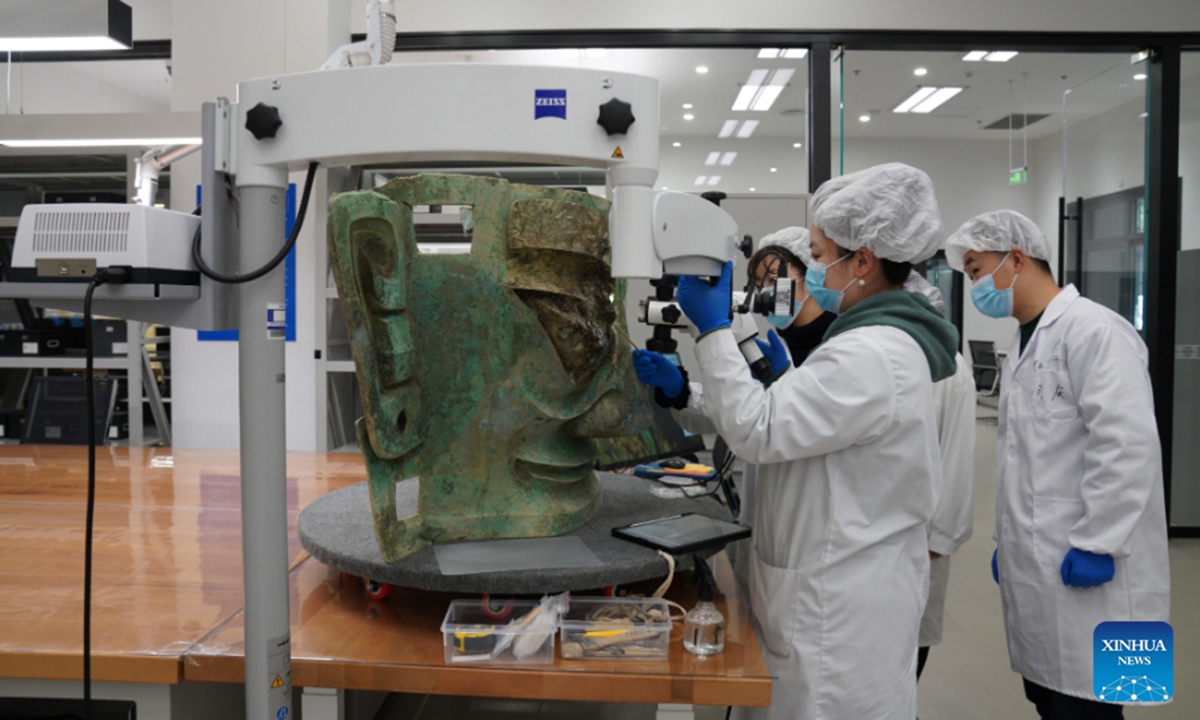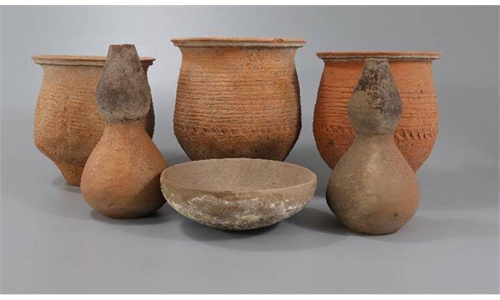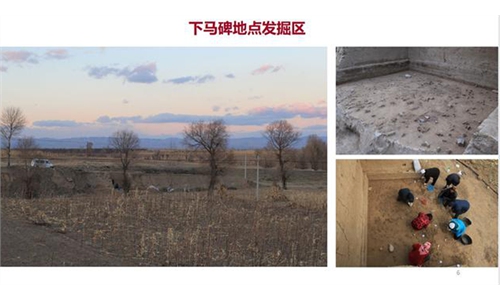ARTS / CULTURE & LEISURE
China’s six archaeological discoveries in 2021 unveiled

File photo shows staff members repairing the bronze mask discoverd at the Sanxingdui Ruins site in southwest China's Sichuan Province. The largest bronze mask unearthed from the legendary Sanxingdui Ruins site in Sichuan met the public at Monday's Spring Festival TV Gala. (Sichuan Provincial Cultural Relics and Archaeology Research Institute & Sanxingdui Museum/Handout via Xinhua)
Chinese archaeological authorities on Friday unveiled six key discoveries of 2021 in China. Experts said on Monday that as well as showing China's large span of history, the discoveries are also significant in tracing various origins of Chinese culture.
The list was released by the Chinese Academy of Social Sciences (CASS) and CASS's Institute of Archeology, and the first selected discovery was the Piluo site in Daocheng county, Sichuan Province, which can be traced back to the Palaeolithic period, dating from roughly 2.5 million years ago to around 10,000 years ago.
The most significant discoveries at the site were Acheulean hand axes, which have been found mainly in prehistoric sites across Africa and the Western coast of the Eurasian continent. It helps to trace the prehistoric roots of the Chinese nation and Chinese civilization, according to Xinhua News Agency.
Unearthed cultural relics at the Huangshan Archeological Site in Nanyang, Central China's Henan Province, span 3,000 years of the Neolithic period. Relics and ruins such as stone, bone and pottery fragments from three Neolithic cultures - the early Yangshao culture, Qujialing culture (3,300 BC to 2,600 BC) and Shijiahe culture (3,000 BC to 1,900 BC) - were found in different layers of earth at the site.
Media reports said the Huangshan Archeological Site reflects the complexity of society and the integration of cultural exchanges between the northern and southern parts of China at that time.
The Sanxingdui Ruins site in Southwest China's Sichuan Province is contemporaneous with the Shang Dynasty (c. 1600 BC-1046 BC). Chinese archaeologists unearthed more than 500 relics in six ancient sacrificial pits, stunning archaeologists and history buffs in China and the rest of the world.
Huo Wei, dean of the School of Archaeology, Culture and Museums at Sichuan University and curator of the Sichuan University Museum, told the Global Times that the Sanxingdui civilization was likely based on the traditional Central Plains civilization and the prominent Bashu culture. It also extensively absorbed certain factors from other ancient civilizations, giving it the characteristics of integration of Eastern and Western civilizations.
Guozishan Tomb in Zhangshu city, East China's Jiangxi Province can be back to more than 2,000 years ago. The owner's identity was determined based on two excavated weapons that once belonged to the descendants of a well-known king of the Eastern Zhou Dynasty (770-256 BC).
Excavation at the tomb started in 2017 and has uncovered more than 2,600 objects, ranging from metal ware, pottery and jade ware to instruments, weapons and items for daily use. The Guozishan Tomb is perhaps the largest tomb complex from the East Zhou Dynasty discovered in Jiangxi, according to a report from the Xinhua News Agency.
The excavation of a Zheng State tomb at Xinzheng City, central China's Henan Province found discoveries from the Spring and Autumn Period (770 BC - 476 BC). Remains of more than 20 chariots and a large amount of horse bones have been found there so far.
Experts said that the discovery will promote the research of the history of the mutual influence among the states during the Spring and Autumn Period, China News reported.
The Tuyuhun Kingdom (417-688) site at Wuwei city, Northwest China's Gansu Province, has been confirmed as the tomb of a member of the royal family of a neighboring kingdom of the Tang empire. This discovery has provided valuable resources for the history of the Tang Dynasty (618-907) and its neighboring kingdoms as well as the cultural communication between them, according to Xinhua News Agency.
Jia Xiaobing, a research fellow at the CASS Institute of Archeology, told the Global Times on Monday that the discoveries have great significance for tracking origins in Chinese history, and the six sites clearly represent different time periods.




